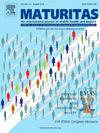Heritability of bone mineral density among Japanese women: A twin study
IF 3.6
2区 医学
Q2 GERIATRICS & GERONTOLOGY
引用次数: 0
Abstract
Background
Osteoporosis is a major risk factor for fractures among the older population. Despite osteoporosis being a significant concern in super-aged societies such as Japan, the heritability of bone mineral density within the Japanese populace remains unexplored. Therefore, we conducted a twin study among Japanese women to determine the extent of genetic and environmental influences on bone mineral density.
Methods
The bone area ratio of 298 healthy, female Japanese twins (comprising 149 pairs, 136 monozygotic and 13 dizygotic twin pairs) registered in the Osaka University Twin Registry was measured using quantitative ultrasound. Classical twin analysis was employed to ascertain the heritability of bone mineral density.
Results
The heritability of bone mineral density for the entire cohort was 0.51 (95 % confidence interval 0.38–0.63). For the women younger than 50 years, the effects of menopause were adjusted, and the best-fit model was also found to be the additive genetics and unique environment (AE) model, with a heritability estimate of 0.53 (95 % confidence interval 0.34–0.72).
Conclusions
Compared with women from other countries, Japanese women appear to have a lower heritability of bone mineral density. Consequently, environmental factors may exert a larger influence on osteoporosis among Japanese women than among women of other races and ethnicities.
日本女性骨密度的遗传性:一项双胞胎研究
背景:骨质疏松症是老年人骨折的主要危险因素。尽管骨质疏松症是日本等超老龄化社会的一个重要问题,但日本人口中骨矿物质密度的遗传性仍未得到研究。因此,我们在日本女性中进行了一项双胞胎研究,以确定遗传和环境对骨密度的影响程度。方法采用定量超声对大阪大学双生子登记处登记的298对健康日本女性双胞胎(149对,136对,13对)进行骨面积比测定。采用经典双生子分析确定骨密度的遗传力。结果整个队列的骨密度遗传率为0.51(95%可信区间0.38 ~ 0.63)。对于年龄小于50岁的女性,调整了更年期的影响,发现最适合的模型也是加性遗传和独特环境(AE)模型,遗传力估计为0.53(95%置信区间0.34-0.72)。结论与其他国家的女性相比,日本女性的骨密度遗传率较低。因此,环境因素对日本女性骨质疏松症的影响可能比其他种族和民族的女性更大。
本文章由计算机程序翻译,如有差异,请以英文原文为准。
求助全文
约1分钟内获得全文
求助全文
来源期刊

Maturitas
医学-妇产科学
CiteScore
9.10
自引率
2.00%
发文量
142
审稿时长
40 days
期刊介绍:
Maturitas is an international multidisciplinary peer reviewed scientific journal of midlife health and beyond publishing original research, reviews, consensus statements and guidelines, and mini-reviews. The journal provides a forum for all aspects of postreproductive health in both genders ranging from basic science to health and social care.
Topic areas include:• Aging• Alternative and Complementary medicines• Arthritis and Bone Health• Cancer• Cardiovascular Health• Cognitive and Physical Functioning• Epidemiology, health and social care• Gynecology/ Reproductive Endocrinology• Nutrition/ Obesity Diabetes/ Metabolic Syndrome• Menopause, Ovarian Aging• Mental Health• Pharmacology• Sexuality• Quality of Life
 求助内容:
求助内容: 应助结果提醒方式:
应助结果提醒方式:


